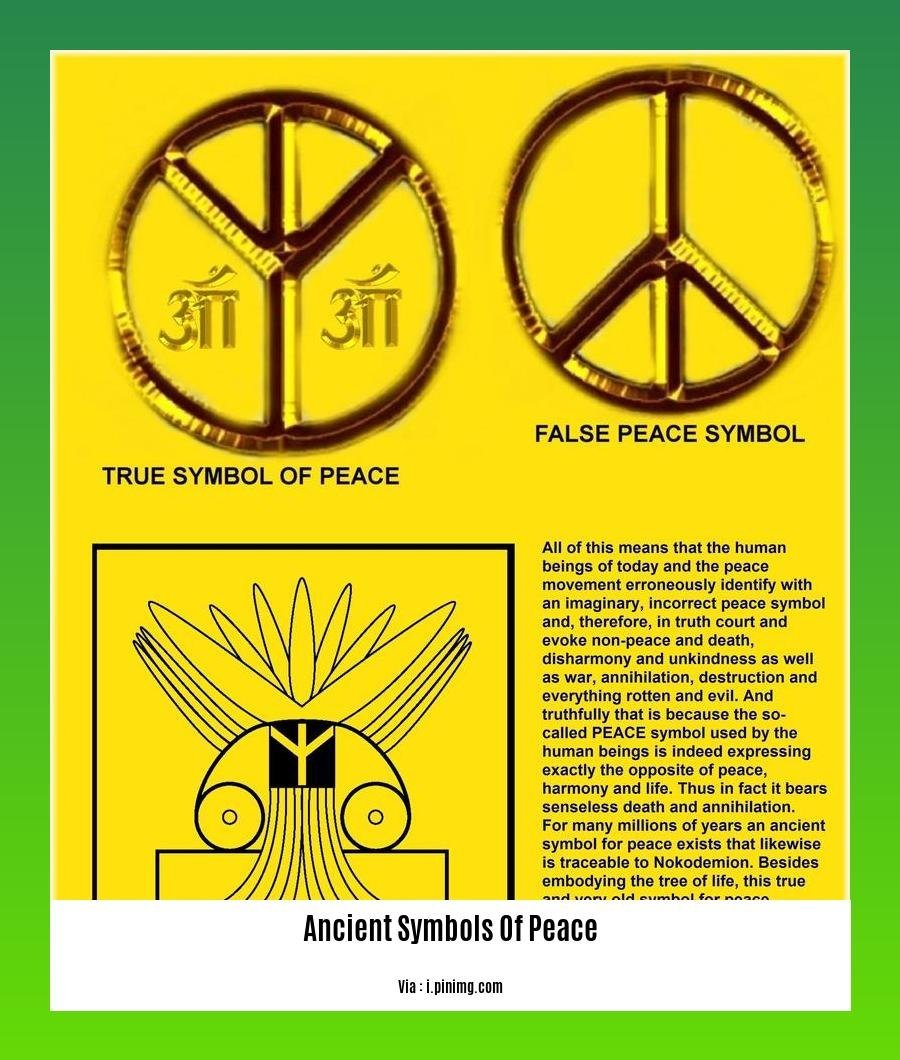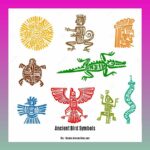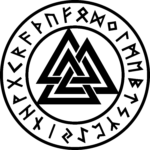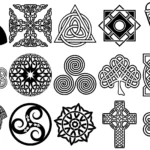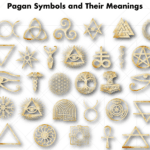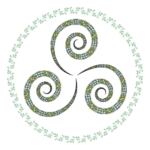Imagine you’re lost in an ancient world and you come across a sign. It’s not just any sign, it’s a symbol that speaks volumes about the peace that people have always longed for. These symbols have connected people across time and cultures, like a secret language that unites us all. Let’s take a trip into this fascinating world of peace symbols and uncover the stories they tell.
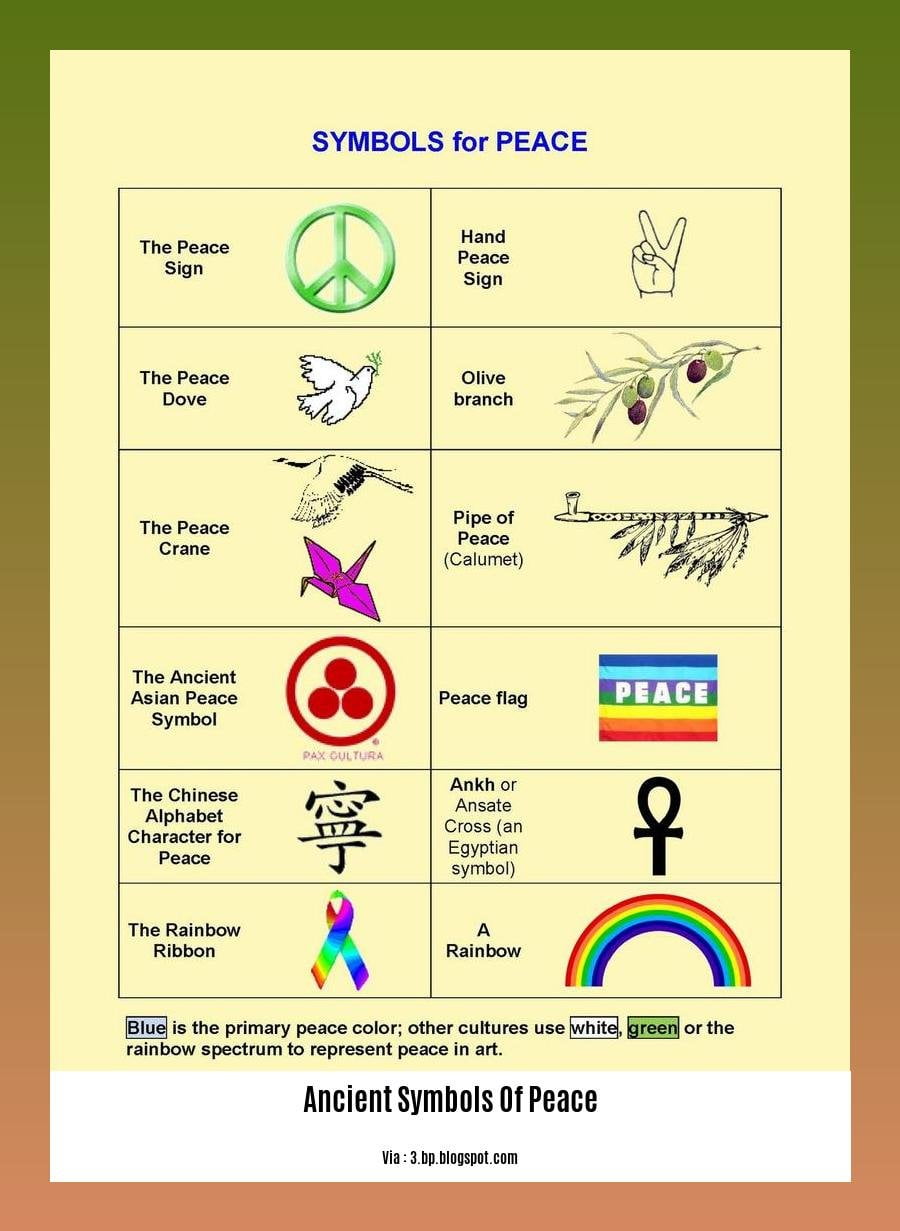
Ancient Symbols of Tranquility: Unlocking the Timeless Messages of Peace
Throughout the ages, human beings have yearned for harmony and understanding, finding solace in symbols that embody peace. Here’s a glimpse into some of the most profound ancient emblems that continue to resonate with us today:
Dove and Olive Branch: Celestial Messengers of Peace
In ancient Greece and Rome, the Dove and Olive Branch carried divine wisdom. It’s believed that when a dove brought back an olive branch, it signaled the end of conflicts and the dawn of reconciliation.
Peace Sign: A Universal Beacon of Harmony
The Peace Sign, with its entwined circles and lines, has become an iconic symbol of hope and anti-war sentiments. It emerged in the ’50s to protest nuclear weapons and has since been embraced globally as a call for peace and unity.
Broken Rifle: A Symbol of Resistance Against Conflict
The Broken Rifle, a gun with its barrel shattered, powerfully rejects violence and promotes non-violent resolutions. It represents the War Resisters’ International, a group dedicated to opposing war and working towards peaceful solutions.
White Poppy: Honoring Sacrifice and Promoting Peace
In Commonwealth nations, the White Poppy is a remembrance of war victims. It originated in World War I as a pacifist alternative to the red poppy, which commemorates fallen soldiers. Wearing a White Poppy signifies a desire for peace over armed conflict.
Peace Crane: A Symbol of Hope Amidst Devastation
The Peace Crane, a folded paper crane, holds great significance in Japan. It’s inspired by the story of Sadako Sasaki, a young girl who folded thousands of cranes in the hope of recovering from the atomic bomb in Hiroshima. Today, it’s a symbol of resilience and peace in the face of adversity.
V Sign: A Gesture of Victory and Resistance
The V Sign, where the index and middle fingers are raised, first appeared during World War II. Initially used to signify victory, it was later adopted by peace activists as a non-violent gesture of resistance against war.
Asian Emblems of Harmony: Interdependence and Balance
Ancient Asian cultures also developed their distinct symbols of peace. The Pax Cultural Symbol, a hexagon inscribed with the Chinese character for “harmony,” represents the belief that peace emerges from the harmonious coexistence of diverse elements.
Modern Interpretations: Embracing the Power of Peace
Today, ancient symbols of peace continue to inspire contemporary interpretations. Artists, activists, and individuals use these emblems to express their desire for a world free from conflict. Whether through street art, social campaigns, or personal gestures, these symbols remind us of the enduring human aspiration for peace and understanding.
- Want to discover the characteristics valued by ancient Romans? Explore ancient roman values.
- Dig into ancient sumerian names and uncover the rich history behind these captivating appellations.
- Delve into the fascinating world of ancient swords of India and discover the artistry and craftsmanship of these iconic weapons.
- Journey through time to uncover the ancient tamil queen names list and be inspired by the stories of these powerful and influential women.
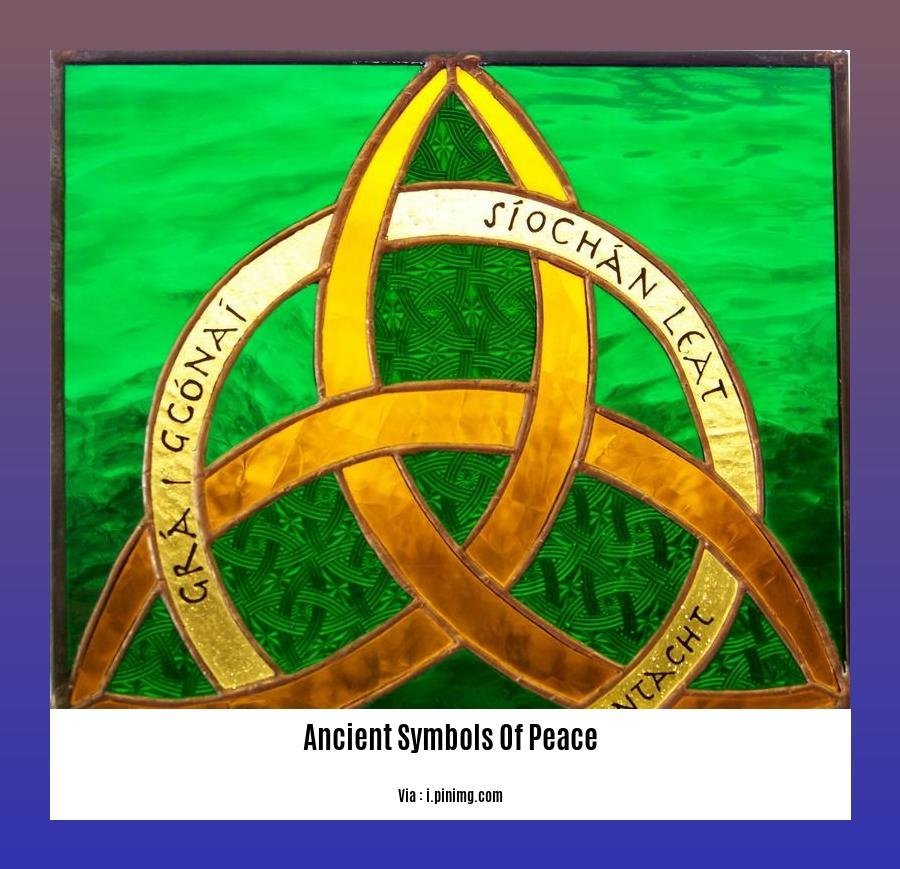
Unveiling the Meaning Behind Ancient Symbols of Harmony and Peace
Symbols are like a secret language that speaks across cultures and time. They convey powerful messages, and some of the most enduring are those that represent harmony and peace. Let’s dive into the stories and meanings behind some ancient symbols that still resonate today:
The Chinese Symbol of Peace: Picture a beautiful character, like a dance of brushstrokes. This is the Chinese symbol of peace, a fusion of balance, unity, and all things connected. Imagine a perfect balance between the bright and the dark, the good and the not-so-good. It reminds us that even in our differences, there’s harmony within.
The Olive Branch: You’ve probably seen this one before. It’s the olive branch, a sign of “let’s put down our weapons” across the globe. Back in the day, when Noah’s flood was over, a dove flew back with this branch in its beak. It was like a green light, saying, “It’s safe to come out now, the waters have settled.”
The Dove: Okay, let’s talk about the dove. This peaceful bird has been a symbol of peace, love, and all things sweet for ages. In Christianity, the dove represents something holy and pure. And in many cultures, it’s seen as a symbol of freedom and hope for peaceful days ahead.
The White Poppy: Remember those red poppies we see on Veteran’s Day? Well, the white poppy is a little different. It’s a way to remember those who’ve been lost in war but also to push for a better world, one without war. It’s like a reminder that we’ve seen enough bloodshed, and it’s time to give peace a chance.
Key Takeaways:
- Ancient peace symbols pack a punch when it comes to meaning.
- Harmony and peace—it’s what we all want.
- The Chinese peace symbol is all about balance and unity.
- The olive branch is a green flag for peace.
- The dove is a messenger of peace and hope.
- The white poppy is a call to say “no more war.”
Remember, symbols have the power to connect us, inspire us, and remind us that even in the midst of chaos, there’s always hope for peace and harmony.
A Journey Through the History of Peace Symbols: From Ancient Origins to Modern Interpretations
For as long as humans have walked the Earth, we’ve yearned for peace. And for as long as we’ve yearned, we’ve created symbols to represent that desire.
Take the dove, for example. With its soft cooing and gentle wings, it’s a universal symbol of peace and tranquility. Or the Hopi hand, a symbol of friendship and harmony that’s been passed down through generations of Indigenous cultures.
In the ancient world, the olive branch was a powerful symbol of peace. It was often used in religious ceremonies and as a symbol of truce on battlefields. Today, it’s still a beloved symbol of hope and reconciliation.
The peace sign, that iconic circle with three lines extending outward, is a more recent addition. It was created in the 1950s as a protest against nuclear weapons. It quickly became a symbol of the anti-war movement and has since been adopted worldwide as a universal sign of peace.
Exploring the Meaning of Peace Symbols
Peace symbols are more than just pretty pictures. They’re powerful visual reminders of our shared desire for a better world. They transcend cultural and geographic boundaries, connecting individuals across time and place.
Whether it’s the dove’s outstretched wings, the gentle clasp of the Hopi hand, or the bold lines of the peace sign, these symbols remind us that we’re all striving for the same thing: a world where harmony, unity, and non-violence prevail.
Peace Symbols in Modern Times
Peace symbols continue to play a vital role in our world today. They’re used in art, activism, and personal expressions to convey the human aspiration for peace and understanding. From the doves of Picasso to the peace signs of protesters, these symbols are a constant reminder that we can always strive for a better world.
Key Points to Remember
- Peace symbols have a long and diverse history, dating back to ancient cultures and spiritual traditions.
- They’re visual representations of humanity’s shared desire for harmony, unity, and non-violence.
- Different cultures and religions have their own unique peace symbols, reflecting their beliefs and values.
- Peace symbols continue to inspire contemporary art, activism, and personal expressions of the human aspiration for peace and understanding.
Exploring the Evolution and Cultural Impact of Peace Symbols
Unveiling the History and Meaning
Peace symbols have a long and fascinating history, dating back to ancient times. One of the oldest is the Chinese character “和,” meaning harmony and balance. This symbol reflects the ancient Chinese belief that harmony is essential for a peaceful world.
Cross-Cultural Connections
Peace symbols are found in cultures around the world. The olive branch, associated with peace in ancient Greece, is still widely recognized today. The dove, carrying an olive branch, symbolizes peace and love in Christianity. These symbols transcend borders and language barriers, uniting people in their shared desire for tranquility.
Religion and Peace
Religion and peace have a close connection. Many religious symbols represent peace and harmony. For example, the Star of David in Judaism and the crescent moon in Islam both symbolize peace and understanding. These symbols serve as reminders of the spiritual importance of peace and reconciliation.
Peace as a Force for Change
Peace symbols are not just passive representations of a desire for harmony. They have played an active role in social movements and political activism. The peace sign, created during the 1960s anti-nuclear movement, has become a powerful symbol of hope and unity. It represents the rejection of violence and the pursuit of peaceful solutions.
Inspiring Art and Culture
Peace symbols continue to inspire artists and creators. From ancient Chinese calligraphy to contemporary street art, peace symbols adorn everything from murals to jewelry. They serve as reminders of our universal longing for a peaceful world and inspire us to work towards it.
The Enduring Legacy of Peace
Peace symbols have stood the test of time as enduring symbols of hope and unity. They remind us that peace is not just an aspiration but a goal worth striving for. By embracing these symbols, we celebrate our shared desire for a harmonious world and inspire future generations to carry on the legacy of peace.
FAQ
Q1: What are some of the most common ancient symbols of peace?
A1: Some of the most common ancient symbols of peace include the dove and olive branch, the broken rifle, the white poppy, and the peace sign. These symbols have been used for centuries to represent anti-war sentiments or desires for harmony and serenity.
Q2: What is the significance of the olive branch as a symbol of peace?
A2: The olive branch is a particularly significant symbol of peace, having been used by early Greeks and Romans to represent divine wisdom. It is often depicted in artwork and literature as a symbol of the end of conflict and the restoration of peace.
Q3: How have peace symbols evolved over time?
A3: Peace symbols have evolved over centuries, gradually taking the shape we know today. The peace symbol, for example, was originally designed by Gerald Holtom in 1958 as a protest symbol against nuclear weapons. It has since become a worldwide symbol of peace and is often used in anti-war and peace-building initiatives.
Q4: What is the relationship between religion and peace symbols?
A4: Religion and peace are closely intertwined, with many religious symbols representing peace. For example, the dove is a symbol of peace in Christianity, while the lotus flower is a symbol of peace in Buddhism. These symbols are often used to promote peace and harmony within religious communities and beyond.
Q5: How can we use peace symbols to promote peace today?
A5: Peace symbols can be used to promote peace today by raising awareness about peace issues, inspiring people to take action, and creating a sense of unity among peace advocates. By using peace symbols in our daily lives, we can help to create a more peaceful and harmonious world.
- Crypto Quotes’ Red Flags: Avoid Costly Mistakes - June 30, 2025
- Unlock Inspirational Crypto Quotes: Future Predictions - June 30, 2025
- Famous Bitcoin Quotes: A Deep Dive into Crypto’s History - June 30, 2025
